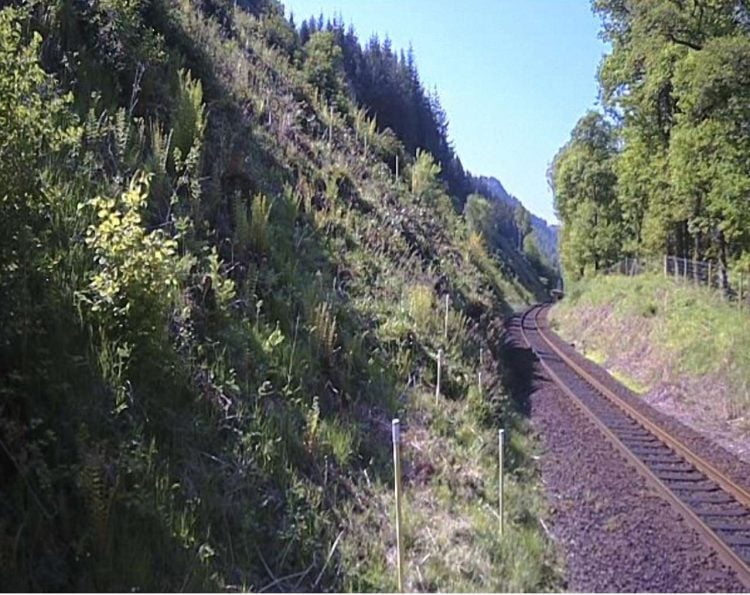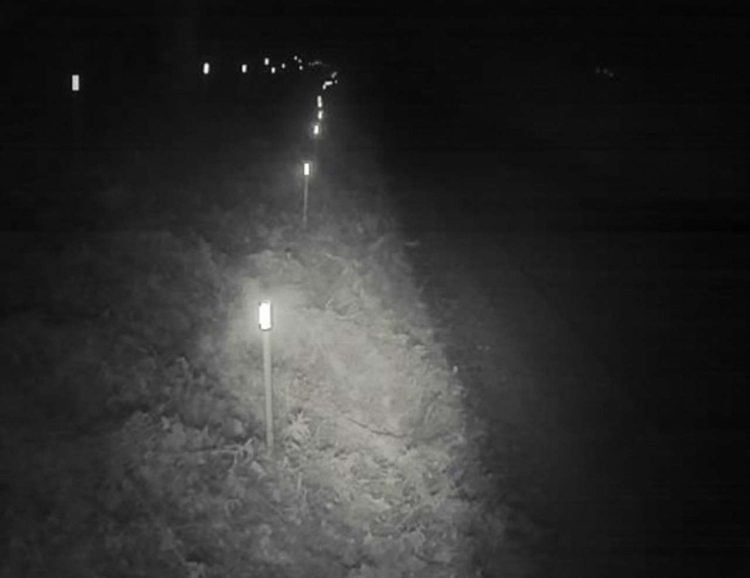A system of tilt meters to provide an early warning of earth movements on and near the railway is being trialled by Network Rail at sites across Scotland.
Surface-mounted tilt meters have been installed at 26 sites across the railway network, and at seven more sites in the coming months.
These include on the main Edinburgh to Glasgow line, the East Kilbride branch, between Aberdeen and Inverness, and on the line to Kyle of Lochalsh. By April 2024, it is expected that tilt monitoring will have been installed at 100 locations throughout.
The meters detect movement in slopes when there is more than a 5-degree tilt and send an alert via the mobile network to alert train controllers to the potential danger.

Notifications are typically sent in less than two minutes. The system is powered by solar panels with battery back-up available for resilience.
Each site has two banks of wireless tilt sensors that are typically spaced 2.5m apart, with a centrally mounted pole, data logger, and cameras to monitor data from them.
It is hoped by detecting movement in slopes above or below the line, the sensors will reduce the risk of landslips and improve the overall safety of the railway. The system will be able to flag potential issues quickly to engineers so that trains can be slowed down and stopped before they reach the problem area.
All slopes around the railway are subject to the impact of weather and, given climate change, are experiencing more and more extreme weather – particularly heavy and prolonged rainfall.
Successful implementation of this system will help keep the railway operating safely. Using technology such as tilt meters complements Network Rail’s wider programme of investment to improve the resilience of the railway’s earthworks and drainage. By 2024 they will have invested £149m in the infrastructure to make it more resilient.
That includes over £30m to improve resistance to extreme rainfall, £13m targeted at known flood sites, £40m for scour protection at bridges, and £25m invested in vegetation management.

Alan Ross, director of engineering and asset management at Network Rail said: “In Scotland, we are increasing our use of new monitoring and surveillance technologies to mitigate risks. This includes making more use of drone and helicopter surveys and we are also trialling new weather forecasting methods for the railway.
“Our weather is increasingly changeable and technology has provided us with tools to proactively monitor and model when and where extreme weather will occur and how it will impact on our infrastructure. The roll-out of tilt meters is another tool which enables us to better monitor the railway and improve safety across our network.
“We are at the forefront of deploying remote monitoring equipment, and we continue to support research and development into a wider range of equipment and technologies which will help protect our infrastructure in the future.”





Responses